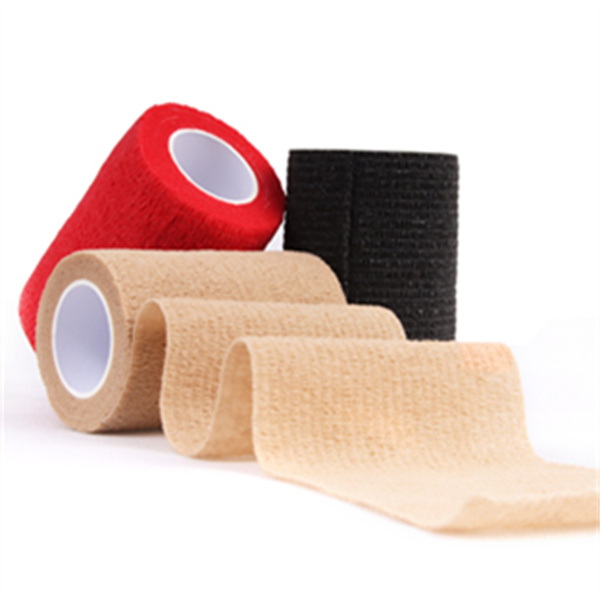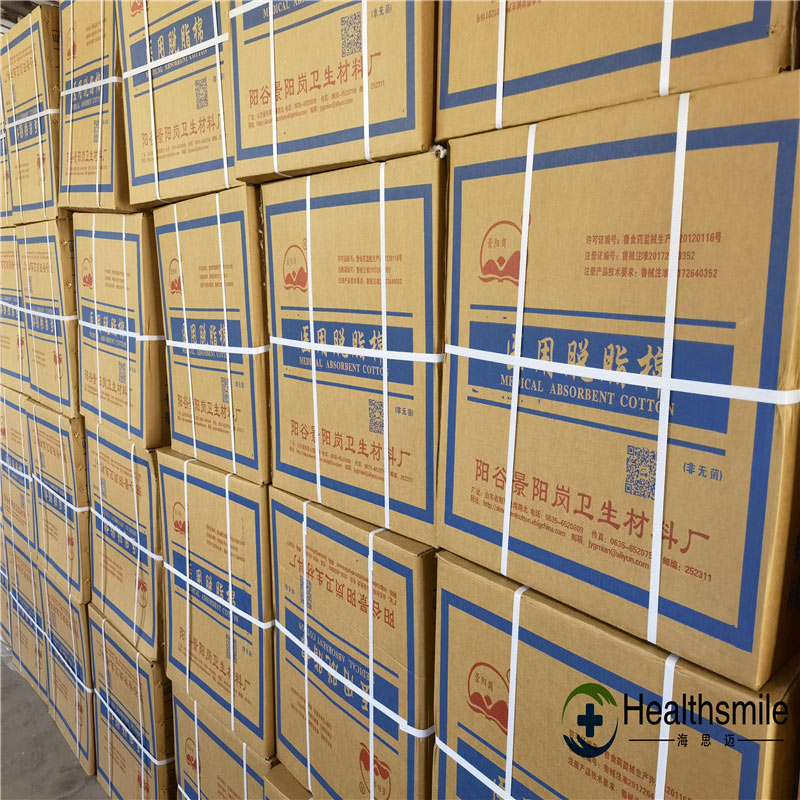We independently evaluate all of our recommendations. If you click on links we provide, we may receive compensation.
Whether you're at home, on vacation, or backpacking in the wild, these first aid kits have what you need. Surgical Gloves Nitrile

Jaylyn Pruitt is currently an associate editor for Health.com, where she covers sleep products.
Accidents happen—big and small—so keeping a first aid kit on hand is always a good idea. Whether it’s a burn in the kitchen at home or a run-in with poison ivy during a hike, a well-stocked kit can help heal most injuries or serve as a stopgap until you can make it to a doctor. Most first aid kits contain bandages, compresses, and wound care supplies; some contain tourniquets, emergency blankets, and multitools.
To find the top options on the market, the Health team tested 25 first aid kits in our lab, examining their contents, quality, organization, and overall value. Alicia M. Hoffman, MSN, RN, Critical Care Clinical Specialist at MercyOne Dubuque Medical Center in Iowa, notes that while first aid training is ideal, kits that provide a simple guide for basic first aid skills are helpful, especially for understanding things like stroke recognition (BEFAST) and administering aspirin for chest pain—so we honed in on options that contain a first aid guide, as well.
An emergency medicine physician on our Medical Expert Board also reviewed this article for medical and scientific accuracy regarding what to look for in first aid kits.
Over the course of my 15+ years as a lifestyle journalist and editor, I've worked at several food publications with test kitchens. With all the slicing and cooking, occasional accidents were unavoidable, and I saw firsthand how important a well-stocked first aid kit is an emergency. In one case, essential medical supplies and quick thinking even saved a staff member's finger.
According to the National Safety Council, almost 200,000 preventable injury-related deaths occurred in homes and communities in 2022 (about 80% of all preventable injury-related deaths that year) and an additional 53 million people suffered nonfatal medically consulted injuries.
The bottom line is that accidents can happen to anyone, anywhere, anytime. Make sure you're prepared by having one of these first aid kits on hand at home, in your car and when doing outdoor activities. It could save digits—or possibly even a life.
The 100-piece Surviveware Small Comprehensive Premium First Aid Kit includes a wide range of essential items such as bandages, CPR kit, gauze, scissors, and an emergency blanket. But what really made it a standout to us is its excellent organization. It has clearly labeled pockets for each type of item, which not only aids in quick identification but also makes all the supplies easily accessible, which is crucial in urgent situations and makes it ideal for comprehensive family usage in the home.
We also appreciate its durability, which makes it a good choice for outdoor enthusiasts, as well. Made from water-resistant and rip-resistant polyester, this medical kit survived drop tests without any damage, indicating that it can withstand rough conditions that might occur during outdoor activities. The kit’s design, including a strong zipper and structured compartments, makes it very easy to use. Plus, it features D-rings so it can be attached to almost anything, making it great for cars, trucks and boats too.
The Protect Life First Aid Kit has 200 first aid supplies contained in a durable hard zip case that makes it a perfect choice for stashing in a cabinet at home without worrying about damaged supplies.
As a well-trusted option for first responders, this compact kit has everything you need for emergencies. including supplies for small wounds and contusions—two of the most common needs in a first aid kit—and extras like an instant cold pack and rescue whistle. We also love that it includes a very helpful first aid guide.
In an emergency, time is of the essence, meaning that one of the top criteria you should think about when selecting a first aid kit is organization. The Homestock+ Professional First Aid Kit is organized with clearly labeled compartments, is MOLLE compatible and has d-rings, so it's easy to attach to a bag.
We loved how easy it was to find supplies in this kit. All the supplies are visible and accessible, making it a great pick for emergency injuries. This kit also contains shears and supplies for burn care in addition to a CPR kit and more standard wound care supplies.
Between cuts, scrapes, and falls, kids are more prone to small injuries than adults. The SHBC First Aid Kit is small but stocked, making it a great choice for families. The kit also contains ACE wraps, which Mohini Bedi, MD, an emergency medicine physician at the University of Maryland St. Joseph Medical Center, called out as a must for families with children.
The kit also contains alcohol and prep pads for wound cleaning, small and large bandages, gauze, and even more additional first aid supplies like emergency blankets, a CPR mask, and a multi-tool. The hard zip case is waterproof and stores away easily for use at weekend sports games or long family vacations.
The Adventure Medical Kits Mountain Series “Backpacker” Medical Kit claims to be the perfect first-aid option for multi-day wilderness adventures, and we agree. Equipped with enough first aid supplies for two people on hiking or camping trips of up to four days, this kit is tailored to meet the challenges of the outdoors, including high-quality supplies for minor and moderate injuries—wound care, cuts, scrapes, scissors, tweezers and even items to stop bleeding quickly. It also includes medications like Diphen, which is an antihistamine useful for allergic reactions to plants or insect bites, plus comprehensive supplies for blisters and ankle sprains (the two most common hiking injuries ).
This rugged nylon first aid bag features a durable, lightweight design that’s compact enough to fit into a backpack without taking up excessive space, and a reflective logo to make it easy to spot in the dark. We found it to be well organized, with zippered see-through pockets that protect your supplies from dirt and moisture, labeled by injury categories, which helped us find what we needed quickly. We also love that it has extra space to add your own items and comes with a fully illustrated manual with instructions for handling common “backcountry” emergencies, including improvised first aid techniques, “When to Worry” tips, and more.
We found the Protect Life The Medicine Cabinet First Aid Kit to be ideal for vehicle storage due to its size, durability, and range of essential items for typical travel emergencies. Not only do we appreciate its portability, but also the clear labeling of items.
Though it’s small and lightweight, it still packs 100 pieces and includes a surprisingly broad range of emergency supplies—all the must-haves for minor injuries, plus a few extras like an emergency blanket, tourniquet, and eye wash. Stashed in your car, this mini first aid kit in a rip-resistant polyester zippered bag is versatile and useful to have on hand for unexpected situations away from home.
As its name indicates, the Johnson & Johnson Travel Ready First Aid Kit is highly portable, but still packs plenty of essentials—all in a clean, compact package. The easy-to-carry case contains 80 pieces to help clean cuts and scrapes and prevent wound infection, including a variety of Band-Aid Brand Adhesive Bandages in assorted sizes, cleansing wipes, Neosporin antibiotic ointment and gauze pads.
Despite its compact size, it has an organized interior that makes items quickly accessible and is easy to open. Its size and the variety of bandages make it perfect to slip into luggage or a car's glove compartment, covering basic needs for minor injuries on the go.
We tested 25 of the top first aid kits in our lab. During testing, our team—which included a registered nurse—determined how easy each case was to open with one hand. We were then tasked with finding specific items in the case and timed our search. We carefully inspected the items for quality and replaced them in the kit to see how easy it would be to keep them organized.
We rated each kit based on the following attributes:
We consulted with several experts in the medical field to select the best products. Those experts included:
In addition to the kits in our roundup, we also tested these kits. They all contained plenty of helpful first aid supplies but fell short on organization or types of supplies.
According to Shalom Sokolow, MD, an emergency medicine doctor and EMS fellow at Phelps Hospital in Sleepy Hollow, New York, the most important part of owning a first aid kit—whether purchased or homemade—is knowing your supplies and how to use them. If you buy a first aid kit, you should open it and identify the supplies inside, especially less familiar supplies like tourniquets and CPR masks, making sure you’re familiar with how to use them.
Jaylyn Pruitt has a Master of Library and Information Science with a focus on health information. As an editor for Health, her goal is to provide easy-to-understand information with a patient perspective in mind.
Braybrook PJ, Tohira H, Birnie T, Brink D, Finn J, Buzzacott P. Types and anatomical locations of injuries among mountain bikers and hikers: A systematic review. PLoS One. 2023;18(8):e0285614; https://www.ncbi.nlm.nih.gov/pmc/articles/PMC10468092
Make a first aid kit. Accessed November 7, 2022. https://www.redcross.org/get-help/how-to-prepare-for-emergencies/anatomy-of-a-first-aid-kit.html

Sterile Latex Surgical Gloves Must-haves for your first-aid kit | blogs | cdc. Accessed November 7, 2022. https://blogs.cdc.gov/publichealthmatters/2021/05/first-aid-kits/